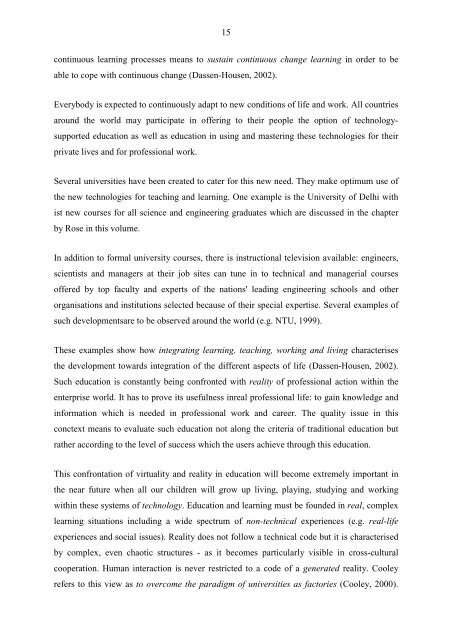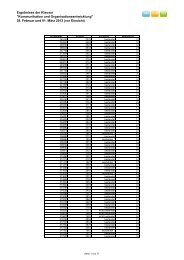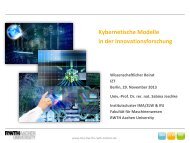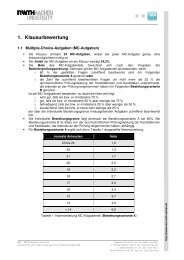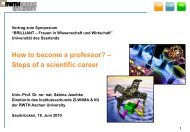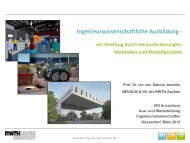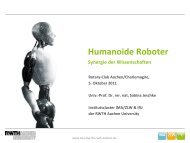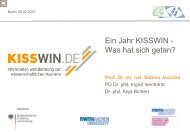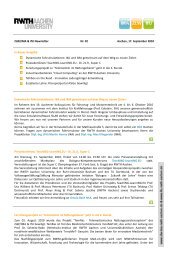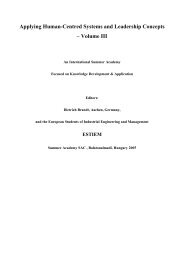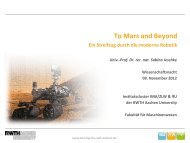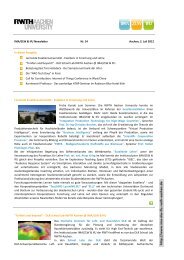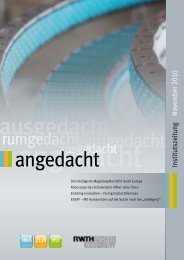Vol. II: Shaping Information and Communication ... - IMA,ZLW & IfU
Vol. II: Shaping Information and Communication ... - IMA,ZLW & IfU
Vol. II: Shaping Information and Communication ... - IMA,ZLW & IfU
You also want an ePaper? Increase the reach of your titles
YUMPU automatically turns print PDFs into web optimized ePapers that Google loves.
15<br />
continuous learning processes means to sustain continuous change learning in order to be<br />
able to cope with continuous change (Dassen-Housen, 2002).<br />
Everybody is expected to continuously adapt to new conditions of life <strong>and</strong> work. All countries<br />
around the world may participate in offering to their people the option of technologysupported<br />
education as well as education in using <strong>and</strong> mastering these technologies for their<br />
private lives <strong>and</strong> for professional work.<br />
Several universities have been created to cater for this new need. They make optimum use of<br />
the new technologies for teaching <strong>and</strong> learning. One example is the University of Delhi with<br />
ist new courses for all science <strong>and</strong> engineering graduates which are discussed in the chapter<br />
by Rose in this volume.<br />
In addition to formal university courses, there is instructional television available: engineers,<br />
scientists <strong>and</strong> managers at their job sites can tune in to technical <strong>and</strong> managerial courses<br />
offered by top faculty <strong>and</strong> experts of the nations' leading engineering schools <strong>and</strong> other<br />
organisations <strong>and</strong> institutions selected because of their special expertise. Several examples of<br />
such developmentsare to be observed around the world (e.g. NTU, 1999).<br />
These examples show how integrating learning, teaching, working <strong>and</strong> living characterises<br />
the development towards integration of the different aspects of life (Dassen-Housen, 2002).<br />
Such education is constantly being confronted with reality of professional action within the<br />
enterprise world. It has to prove its usefulness inreal professional life: to gain knowledge <strong>and</strong><br />
information which is needed in professional work <strong>and</strong> career. The quality issue in this<br />
conctext means to evaluate such education not along the criteria of traditional education but<br />
rather according to the level of success which the users achieve through this education.<br />
This confrontation of virtuality <strong>and</strong> reality in education will become extremely important in<br />
the near future when all our children will grow up living, playing, studying <strong>and</strong> working<br />
within these systems of technology. Education <strong>and</strong> learning must be founded in real, complex<br />
learning situations including a wide spectrum of non-technical experiences (e.g. real-life<br />
experiences <strong>and</strong> social issues). Reality does not follow a technical code but it is characterised<br />
by complex, even chaotic structures - as it becomes particularly visible in cross-cultural<br />
cooperation. Human interaction is never restricted to a code of a generated reality. Cooley<br />
refers to this view as to overcome the paradigm of universities as factories (Cooley, 2000).


